|
A long time ago (250 years thereabouts), a powerful dude named Sakakibara Masamune decreed that the people of his castle town slip into something more comfortable and shimmy downtown for a good time. “Do what?” his attendants asked. “Throw a party, you monkeys. I’m outta here!”
Indeed he was, off to rule another fiefdom, but not before starting a tradition that would fill the fine streets of Himeji with colourful summer kimono (ゆかた, yukata), octopus dumplings and (centuries later) skyrockets and riot police, for three days a year, every year thereafter. More than just a celebration of the highly functional yukata, it’s a fashion show. Women’s yukata colours are brighter, patterns livelier, and horror!--hems are rising. The elderly women of the Good Hood shake their heads and click their tongues at these parading young things in micro yukata; the young fellas nod their heads and knock themselves out with their tongues. The Yukata Festival, held June 22-24, also celebrates the rainy season. That’s right, it is the WETTEST time of the year (and news just in: rain is forecast for Tuesday, June 23nd) which doesn’t stop several hundred thousand people from choking the streets and alleys south of Himeji castle with coin to spend on cold beer, toys and tasty treats. Catering to the masses are more than 800 stalls, erected and manned by a small army of itinerant carnivaleers called tekiya. Word on the street is that tekiya are in cohorts with the local yakuza; others say that’s an unfair image and that the stall holders are just abiding by a ‘system’ which takes a nice slice of their earnings and hands it to the mob. Let’s call it a ‘licensing fee’. The City seems OK with this as it ‘stimulates’ the local economy and frees up their rubber stamps for more pressing matters. Times have changed since I tagged along with some English teachers to my first Yukata Festival 15 years ago. Then, youth gangs flocked from all over the province to wage theatrical (and sometimes violent) running pitched battles with their rivals on the city streets. Hard to believe in peace-loving Japan? Well listen to this: watching riot police get pelted with skyrockets, drag troublemakers off to paddy wagons by their orange hair, and see the odd motor scooter get barbecued, reminded me of the Costa Rican fruit vendor riots of ‘91 (Yes, I was in Costa Rica in 1991). Cheap entertainment for the masses, poor public relations for the police, not exactly a festive family affair. That’s all gone. The police have changed their tune. They now use subterfuge and infiltration tactics, clever stuff like putting dozens of plain clothes officers into the crowds to catch troublemakers on digital camera or video. Maybe this has worked, or maybe the young punks have just gotten older, gotten married and gotten a job, because the Yukata Matsuri IS now a family affair. ‘Smokin Joe’ Matsumoto, the old kitchen gardener who lives on my street in the Good Hood, will be taking his grandchildren again this year. Those long sleeves of his faded yukata will be sure to hold a pack of cigarettes, a lighter and some coins for cotton candy. My old friend Ono-san won’t be going; she thinks it’s too crowded, too noisy, the food tasteless and too expensive. “I’m saving my yukata for the fireworks festivals,” she says. If YOU go, be sure to drop by the Ghost House at the edge of Otemae park; it has been a going concern for years, adept at taking your money and scaring the beejeezuss out of you with the screams of other teenage patrons. They say a good ghosting chills you out during a long, hot Japanese summer. Personally I’d prefer a cold beer...
0 Comments
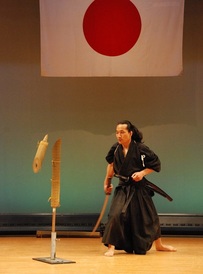 Tameshigiri - live target cutting Tameshigiri - live target cutting Souke, my sword teacher, gave a speech at our annual gala performance last weekend. She reiterated what all teachers have said at least once in their lives: that making mistakes is vital to the learning process and that fear of failure can lead to unnecessary anguish. To press her point she told of how, as an elementary student over a half-century ago, she performed an entire dance routine with a tack in her foot because she couldn’t remove it by herself and didn’t want to bother her teammates with the trouble. Ouch. Now in her 60s, she is worldlier, wiser, has sold her Hummer II and given up Camel Lights for low-tar alternatives. She is as nimble, quick-witted and supple-limbed as a teenager, presiding over the nightly sessions of iaido (the art of sword drawing), senbu (fan dance), kenbu (sword dance) and shigin (詩吟, poetic song) at her dojo of Kanshō-ryu (the Flying Crown sword style) in Himeji city, western Japan. I remember how, only six months after walking through her door, she placed a shinken (‘live’ sword) in my hands; a blade that could have spliced the nose hairs on a fruit fly. It felt like an electric eel between my sweating palms—light, hot and flighty—and I handled it nervously, worrying that each time the blade departed the sheath, I was putting myself and the whole world in peril. I didn’t show my fear during practice, but the day I walked onto the stage at the City Culture Centre, three weeks later, I could hardly contain it.  The Flying Crown sword style in action The Flying Crown sword style in action The Dai Hall was packed. There was standing room only for the big name kabuki star who was to appear later (our dojo providing the supporting act). While Mister Kabuki was calmly powdering his face out back, our dojo members sat in nervous ranks along the stage, concealed behind a long, heavy curtain. From the other side of this came the hum and murmur of 1,600 people—a cough here, a whisper there—belying the ocean of expectation which lapped at the stage. The older, experienced dojo members around me focused themselves, breathing deeply. The newer members fought to keep their Adam’s apples from defying gravity. “Standby!” came the stage hand's call from the wings. The curtain rose, and our dopamine levels with it. The stage filled with whirling black hakama and the flashing sword blades of iaidoka performing kata to the best of their ability: hangetsu (the half-moon cut), fūjin (the wind god cut), fubuki (the blizzard cut) and on they went until it came time for the tameshigiri, the stylised cutting of rolled tatami mat poles. One by one, the targets fell in clean sweeps. In the Japan's Edo period (1600-1868), tameshigiri was performed on dead (and sometimes live) criminals to test sword blade-strength. Then it was my turn to perform michizure (みちづれ). Roughly translated it means “the highway companion.” It's a technique which I feel embodies the philosophy of iaido and its so-called “moving Zen" form, in which the swordsman, perceiving the threat, acts on it clearly and cleanly. In the case of michizure, the 'threat' is an assassin tailing you. Thrust. Pivot. Strike. I remember the blade easing through the tatami fibres, the foul-smelling and water-logged roll drop with a thud to the stage floor. As I returned the blade to its sheath, something bit my hand. A wet warmth glided down my fingers. I glimpsed blood on my toes but resumed my seiza position, pressed my hand into my hakama to stem the flow, and bowed. The audience applauded, none the wiser. 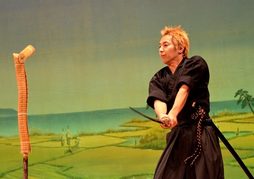 Slice and dice... Slice and dice... The most shameful mistake a samurai could make was to cut himself. Relieved, but despondent, I shuffled offstage. A veteran swordsman caught me by the sleeve and pulled me aside. “Nerves only get in the way," he gravelled. “Empty your mind and get on with it.” Seven years on, and countless performances since, those words still resonate. Failure never enters my mind when the sword closes on its target now. The blade does the hard work. The handler only sets it in motion, giving speed, angle and timing. I still attend our dojo’s twice weekly training sessions, marking my progress by scarring, gashing, pock-marking and carving the floorboards and ceiling beams. I even managed to tear my hakama with my sword tip recently. But I see veterans do the same; they drop their fans, stumble and snag their spear tips on floorboards, forget their moves and stand dumbly as the music continues without them. While she might bark and growl at these faux pas, Souke forgives. She still makes them herself. As the saying goes, 猿も木から落ちる. “Even monkeys fall from trees.” *Moving Zen Part I appears in the May 2014 archives.
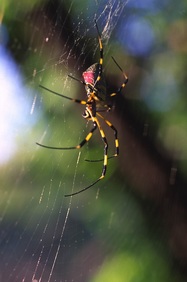 Jorogumo spider. Image by John Harvey Jorogumo spider. Image by John Harvey I have a revolving door policy for insects great and small in my house; the logic being that big insects (spiders) eat small pesky ones (roaches, earwigs, mosquitoes, fruit flies and clothes moths). Which is generally a good thing—until the wet season arrives in western Japan. The first meaningful rain of June fell last night: a long, slow drizzle that filled the flower pots and beat down on the roof tiles of the empty houses in my neighborhood. It is a precursor to the equally long and torrid wet season, now looming off the coast of southern Japan. Not only does rain bring restlessness to my old house (timbers expand, paper doors ripple, tatami mats sag) but to the insects who venture from its nooks and crannies in search of food and romance. Or, where my living room is concerned, liquor and late night TV. So the long rain fell on into the night and there was nothing for it but to ease out the tide on a bottle of Black Mist Island shōchū (焼酎) and watch Zatoichi, a film about a blind ronin who wanders the highways of old Japan slaying anyone annoying or who smells bad. I jiggled my ice cubes, listened to the thunder and waited for Zatoichi’s next head to roll. In the darkened corner of the room something moved. From beneath the tokonoma (a sacred hearth kept by most traditional Japanese houses), a monster yorugumo, or night spider, emerged. This was no washed-out Incy-wincy—it crossed the tatami mats like a small cavalry unit with the leg-span of a kid’s tricycle wheel. Zatoichi hid in the shadows. The next evening the spider was back, drumming his feet on my paper sliding door, looking unimpressed, and in the words of Raymond Chandler, “as inconspicuous as a tarantula on a slice of angel food cake.” A tarantula? This huge, hairy bastard would have eaten ‘em with cornflakes! Now I don’t like to kill anything, but since the cockroaches had disappeared, I wondered what next lay up the food chain? Then I remembered an old Japanese superstition: “if you spy a spider in the morning (asagumo), you shouldn’t kill it. But if it is a night spider (yorugumo), then it means bad luck and you should SMASH it!” I pulled from the closet my Toshiba GH-0971 and plugged it in. The room vibrated with the sweet sound of doom. The spider broke into a gallop—the cavalry headed for Death Valley. The great thing about the Toshiba GH-0971 is that it has extensions! A large insect going up one sounds a lot like a fat man being blasted from a cannon (only in reverse). That strange plopping noise caused me to reflect. I said three なむだぶなむだぶ, invoking the name of Buddha, and returned the GH-0971 to its mantel. Guess I should blame the warm, humid southerlies rising from the Philippines for this mega-fauna. Rain sets off a growth spurt which culminates in an abundance of bug life; spider webs festoon the telephone lines, abandoned houses, disused bicycles and futon-drying poles of my neighborhood. Japanese folklore endows these creatures with supernatural abilities—to transform into boys or women, like the large-bodied Tsuchigumo, or Earth spider, which tries to lure the samurai commander Minamoto no Yorimitsu (top picture) to his death, but is itself fatally vanquished in one famous tale. Or the Jorōgumo (the “femme fatale" spider), which is said to assume the body of a beautiful woman and to have once seduced passing samurai, whereupon she wrapped them in silk and sucked them alive. Actually a member of the golden orb spider family, the jorōgumo is venerated as a goddess at the Jōren Falls on the Izu Peninsula, where she is said to save people from drowning. From mythical doom to modern day gloom, the new scourge, according to the Japanese media, is the Australian redback spider ‘plague.’ Did you hear correctly? Yes, you did. The story goes that, 20 years ago a container ship carrying Australian wood chips docked at Osaka port and, once the captain and his Filipino crew had taken leave, the redbacks (Latrodectus hasseltii) slipped on their Hawaiian shirts, sunglasses, and with extra supplies alpha-latroxin taped to their chests, sneaked by Osaka Customs and Quarantine to kiss the earth of their new homeland.  Unwanted and unloved - Latrodectus hasseltii, aka redback spider. Unwanted and unloved - Latrodectus hasseltii, aka redback spider. I loathe journalistic shortcuts like “Experts estimate…” but let me use it just this once: “Experts estimate there are now more than 19,000 redbacks in Japan. As of Oct 20, 2014, 100 people had been bitten with no fatalities.” According to the Australian Broadcasting Corporation report, a nice man named Dr Koichi Goka from the National Institute for Environmental Studies, believes the Japanese medical system is not prepared for the spread of this spider: “The medical system is behind. They have anti-venom in Osaka and Fukuoka but other provinces don't have supplies. So it's a serious issue and hasn't been addressed," he said. The report also says that the spiders have no natural enemies here and that heating systems (toilet seats noted) have helped the spiders to survive Japan’s cold winters. And finally, this gem: “Japan experts warn it is possible that redbacks could mutate and return to Australia with a stronger, more toxic bit.” Are you kidding me? Why would anyone in their right mind want to leave a country with heated public toilet seats? |
This Blog:What is the essence of a traditional Japanese neighbourhood? Writing from my home in Himeji, a castle town in western Honshu, Seaweed Salad Days distills, ferments, presents! Archives
March 2024
Categories
All
|
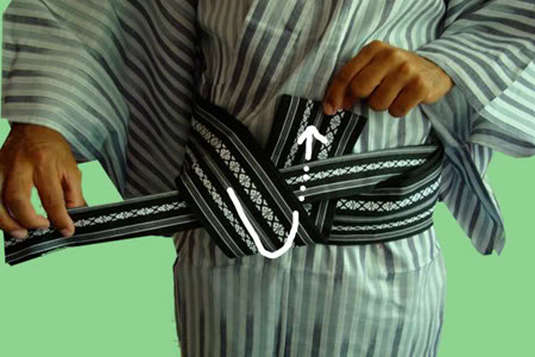
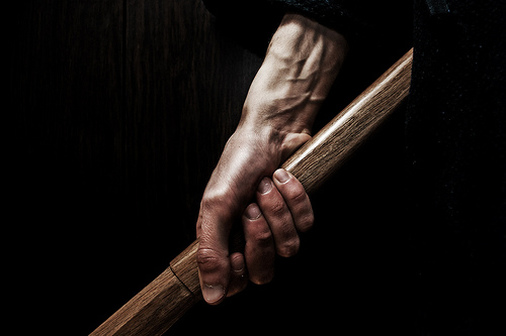
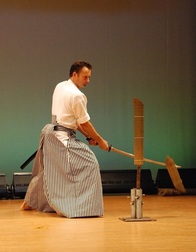
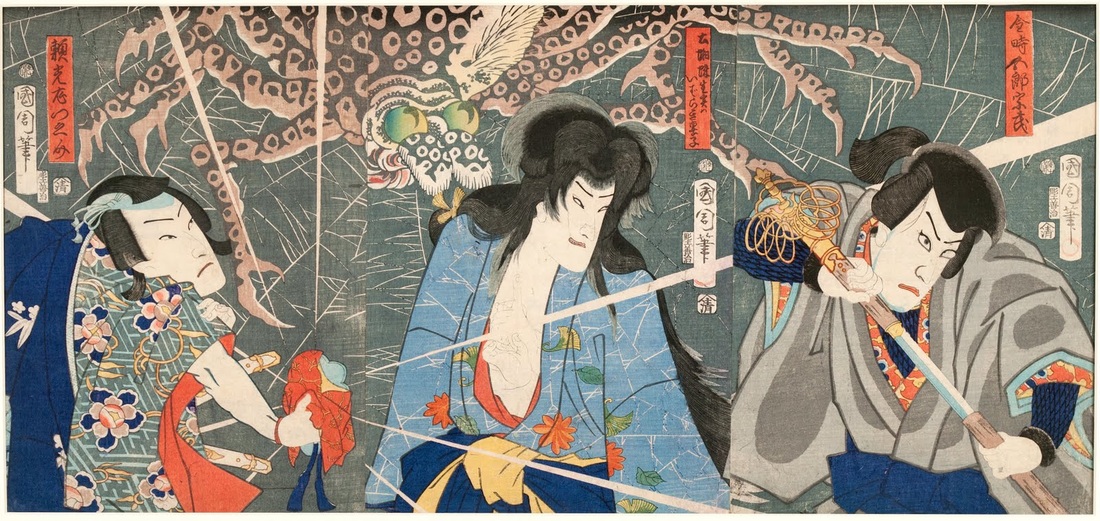
 RSS Feed
RSS Feed
